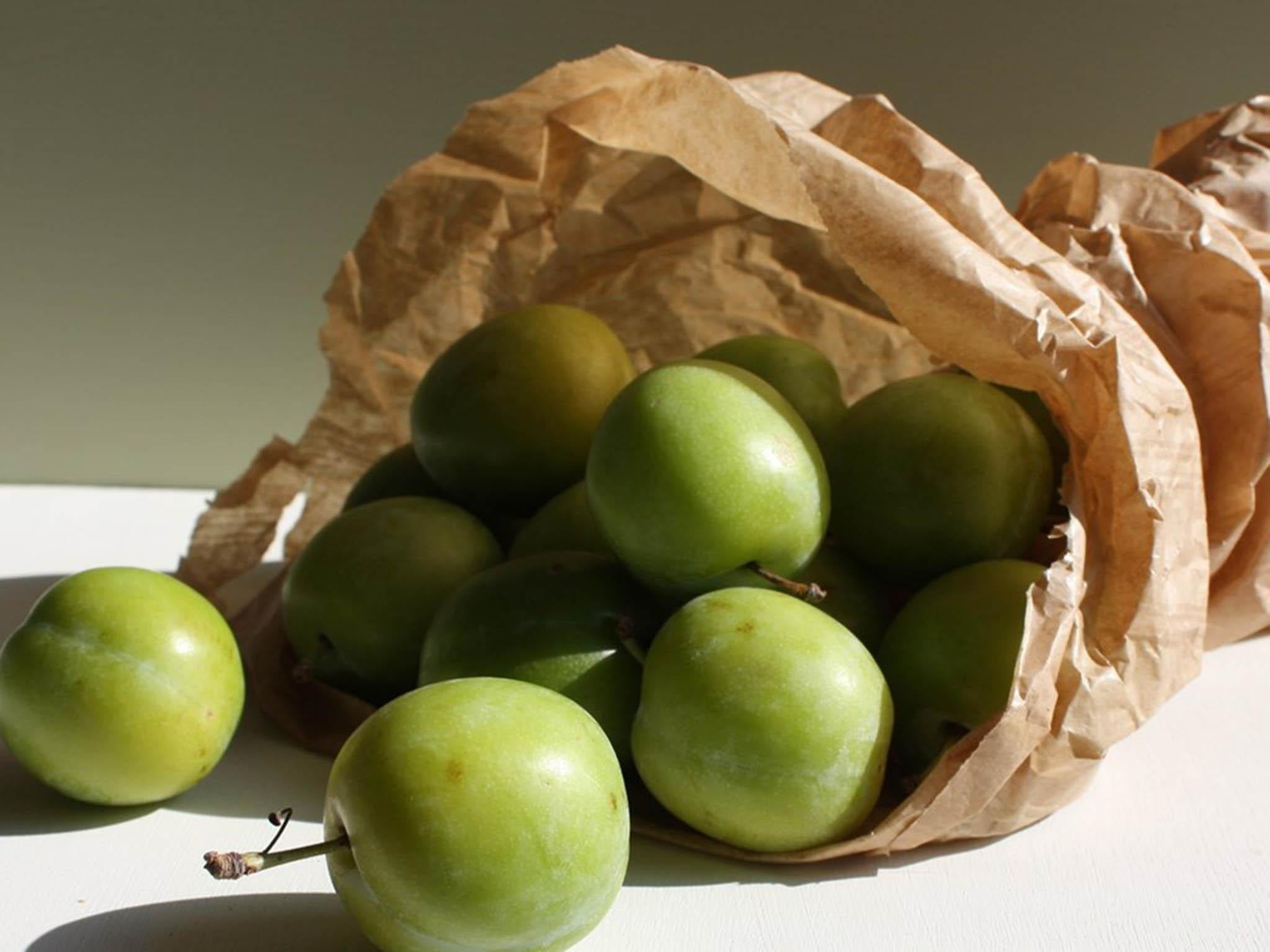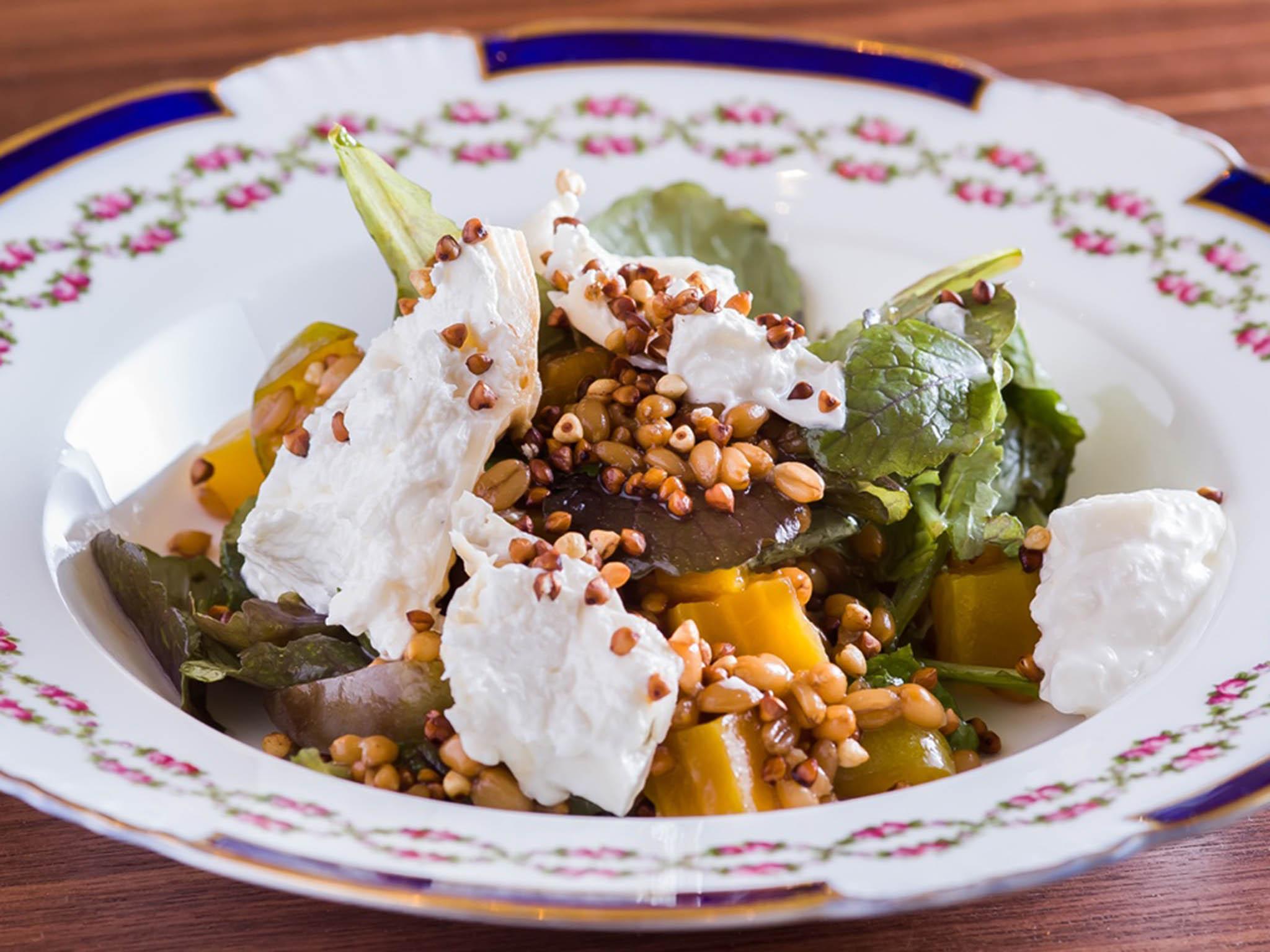How to cook with greengages
Now in their peak season, these sweet green plums can be eaten raw or cooked up into a fruity crumble or a succulent salad

Your support helps us to tell the story
From reproductive rights to climate change to Big Tech, The Independent is on the ground when the story is developing. Whether it's investigating the financials of Elon Musk's pro-Trump PAC or producing our latest documentary, 'The A Word', which shines a light on the American women fighting for reproductive rights, we know how important it is to parse out the facts from the messaging.
At such a critical moment in US history, we need reporters on the ground. Your donation allows us to keep sending journalists to speak to both sides of the story.
The Independent is trusted by Americans across the entire political spectrum. And unlike many other quality news outlets, we choose not to lock Americans out of our reporting and analysis with paywalls. We believe quality journalism should be available to everyone, paid for by those who can afford it.
Your support makes all the difference.“Greengage” is a beautiful name – but for these little plums, it’s one of many. In France, they’re known as “Reine-Claude”, and in Turkey, they’re somewhat less romantically named ”Erik”.
The sweet dessert plums were first imported to Britain in 1724, but are now firmly embedded in our national cuisine. They start to ripen round late August and September. It’s round this time that the skin is at its thinnest and luminescent, just concealing the juicy flesh below.
An under-ripe greengage has the same tartness as rhubarb or gooseberry. But a perfectly ripe greengage is sweet and succulent. They are delicious eaten raw, and are often also cooked in desserts or savoury condiments. Greengages are widely-available at greengrocers and supermarkets when in season. To prolong enjoyment, greengages can be preserved in alcohol, turned into a jam, or poached and then frozen.
How to cook greengages
Greengages can be cooked in an oven – inside a crumble or pie, for example. Or they can be cooked on a hob with a bit of water, to make a lose compote. Either way, they remain textured – with detectable skin and flesh. To create a smoother-textured purée, blend the cooked greengages and pass them through a sieve, or a mouli. The purée can then be used in cocktails, jellies or sorbets.
Greengages have high pectin levels, which make them a good fruit for preserving. They make sweet and delicious jams, but also work well in a savoury context. A spoon of greengage chutney cuts through fatty meats, or oily fish like mackerel. A good accompaniment to sashimi or soused fish.
Greengages work well against a sweet backdrop – like a buttery pastry case, a sweet crumble topping, or a rich, custard-based ice cream. Delicate spicing is a nice way to add interest to a greengage dessert – try nutmeg, vanilla, star anise or cinnamon. Ginger or sweet nuts like pecans or almonds also work well alongside greengages, with a greengage frangipane making a lovely autumnal dish. If the greengages have been cooked with vinegar, onions and savoury spices to make a sharp chutney, then the flavours are good with oily fish like mackerel, or rich cheeses like bries or camemberts.

Smoked burrata with golden beetroot, grains and pickled greengages by Anna Hansen
375g of burrata, smoked (approx. 3 balls, each 125g)
mixed salad leaves
Pickled greengages
2kg greengage plums
1.5l water
750ml of rice wine vinegar
350g of sugar
4 star anise
2 lemongrass sticks, bashed
1 red chilli, split lengthways
1 tbsp of fennel seeds
Golden beetroot
2kg golden beetroot
150ml of cider vinegar
150ml of water
75ml of Chardonnay vinegar
salt
freshly ground black pepper
Spelt
500g of spelt, soaked in cold water in the fridge overnight
1 leek, cut into 3
1 bulb of fennel, cut into quarters
2 medium red onions, peeled and quartered
2 carrots, halved
3 black cardamom pods, cracked
1 red chilli, split lengthways
3 cinnamon sticks
olive oil
Dressing
500ml of verjuice
500ml of rice wine, Shaoxing
125ml of light soy sauce
250ml of mirin
2 black cardamom pods, cracked
45ml of yuzu juice
200ml of argan oil
Toasted buckwheat
100g of buckwheat, soaked in cold water in the fridge overnight
maldon salt
1 pinch of sumac
rapeseed oil
Start with the pickled greengages as these need at least 48 hours to develop. Place all of the ingredients except the greengages in a medium-sized saucepan and bring to a boil. Reduce to a simmer and cook for 15 minutes. Meanwhile place the greengages in sterilised jars – this will make several jars which can be stored for a few weeks once sealed – and pour over the hot pickling liquid, discarding the flavourings. Seal the jars and leave for at least 48 hours.
During this time you can also soak the spelt and buckwheat in separate bowls of cold water overnight. Once soaked, drain both through a sieve. Preheat the oven to 160C/gas mark 3. For the golden beetroot, place the beetroot in a roasting tray and drizzle with the cider vinegar and water. Cover with foil and roast for 45 minutes.
Allow to cool slightly, then peel the cooked beetroot, cut into wedges, toss with the chardonnay vinegar and some seasoning then set aside. For the spelt, add a little olive oil to a large pan, then sweat down the vegetables with the spices. Once aromatic, add the drained spelt and mix well. Add enough water to cover and simmer until the spelt is tender (20–25 minutes). Remove from the heat and drain off any excess liquid, then remove the vegetables but keep the spices in with the spelt.
For the dressing, bring the verjuice, Shaoxing rice wine, soy sauce, mirin and cardamom pods to a boil in a small pan. Allow the liquid to reduce by half, then allow to cool slightly before whisking in the yuzu juice and argan oil. Heat a little rapeseed oil in a frying pan over a medium-high heat. Add the drained buckwheat and fry for 30 seconds then drain through a sieve. Fry the buckwheat two more times to ensure the grains are cooked through and crisp on the outside.
Drain any excess oil after the third time and sprinkle with a little Maldon salt and a pinch of sumac. Once cool, the buckwheat can be stored in an airtight container until ready to use. To serve, allow all the ingredients to come to room temperature. Add a few golden beetroot wedges to each plate and a few spoonfuls of the pickled greengages and cooked spelt. Add a handful of mixed salad leaves, and tear over half a ball of smoked burrata each. Sprinkle over the toasted buckwheat and the dressing to serve.
Recipes courtesy of Great British Chefs. Visit their site for more gorgeous greengage recipes
Join our commenting forum
Join thought-provoking conversations, follow other Independent readers and see their replies
Comments